Here’s How to Create a Media Kit For Your Blog
It’s no secret that a lot of people start blogging in the hopes of eventually monetizing it and make a passive income. Even 45% of marketers say blogging is a top priority of their content strategy to achieve positive ROI.
That’s true, exciting opportunities open up to serious bloggers, and it takes a lot of hard work and dedication to make that happen. So when opportunities come knocking on your virtual door, how would you best present yourself and your blog to prospective partners or advertisers? Ever thought of creating your media kit?
What is a media kit?

It’s simply a resume for your blog, highlighting its best features and accomplishments. The document is given to potential partners or brands who want to work with you or you want to collaborate with.
Now when we say “document”, that does not mean it should be plain and boring black and white. You can get creative and personal in creating your own media kit and still make it look professional and easy to understand. Here are some tips.
What should be in your media kit?
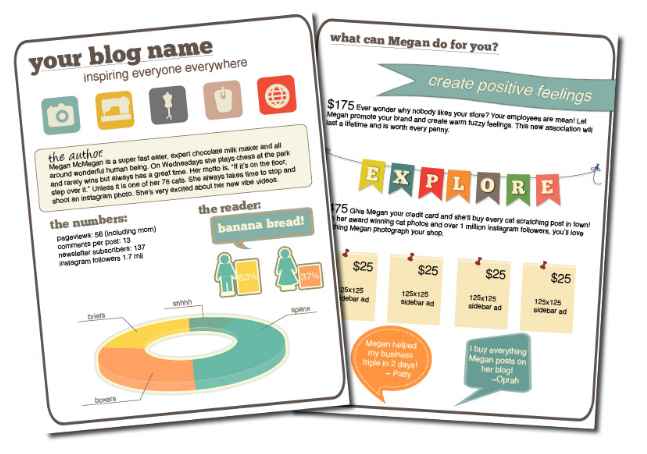
- A summary of your blog
It should clearly spell out exactly what the readers are getting when they visit your blog. Be direct and say the most important points of your blog succinctly. Include when your blog started, why you created it, what compelled you to write about certain topics, and what you want to get out of it.
- Your short bio
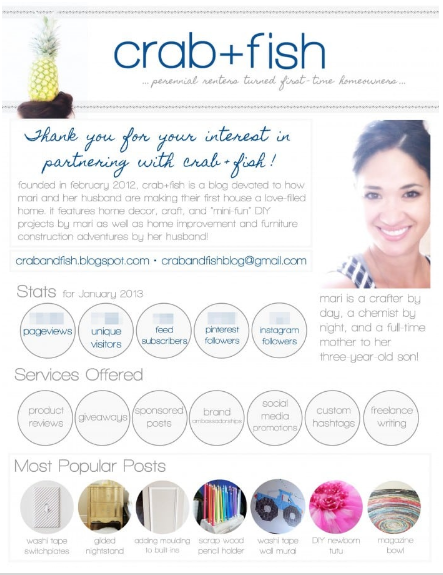
Image Source
I recommend writing in the third person as it’s more professional and objective. Better to also write in a conversational tone and deliver information about yourself without being too serious. If you have a quirky blog and personality, let it show, so readers can relate to you as a person.Aside from stating your relevant writing experience and accomplishments, you can tell the audience where you’re from, or the causes you’re most passionate about as it relates to your blog.
Don’t forget to include a photo of yourself and your blog’s logo. Use a professional-looking headshot, a bright, clear photo that’s taken recently, not something you took with your smartphone five years ago.
- Stats and Analytics

Show potential advertisers and collaborators what results they can expect from working with you. Some of my suggestions are:
- The number of subscribers or sign-ups. If you can manage to be as specific as breaking down your readership demographics, i.e. age, gender, location, the better.
- Unique visitors per month
- Page views per month
- Page Rank (Google and Alexa primarily)
- Social media stats - Number of followers, average number of likes, comments, and organic reach
- Popular Posts or Topics Covered

You can tailor-fit this section according to your target advertiser or collaborator. Put the spotlight on topics that also resonate with the brands’ target market. Choose the most viewed, or most liked, or most commented posts. I suggest displaying up to five most popular articles and present them in a bulleted list or an image grid with descriptions.
- Brands You’ve Worked With
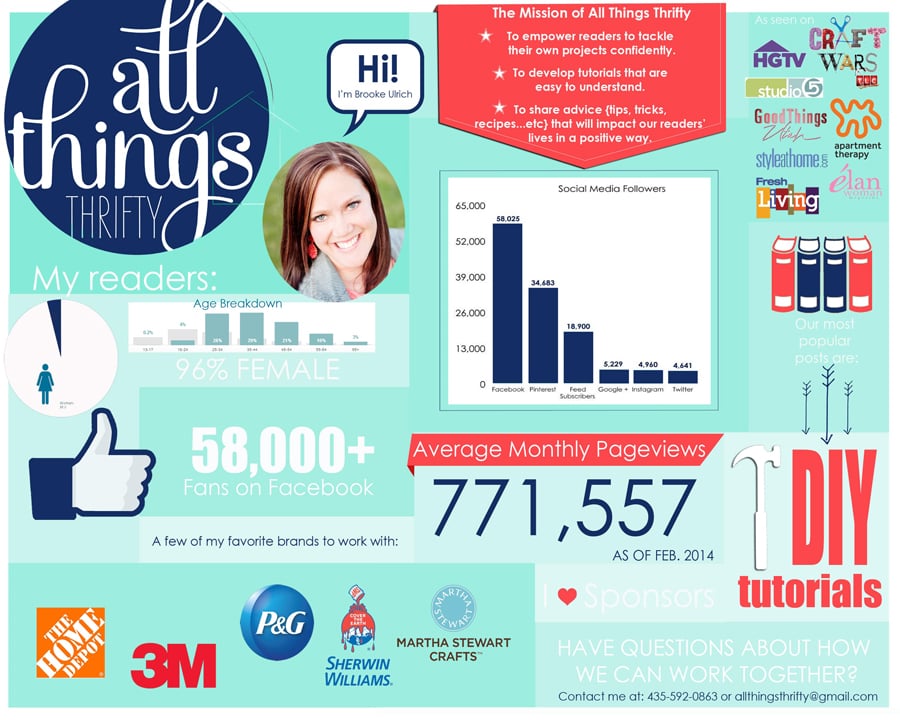
You can go as simple as sharing their logos or be as detailed as sharing impressive results from the collaboration. Better if you can get testimonials from previous or current collaborators to add credibility to your experience of handling such projects.
- Collaboration Opportunities and Rates
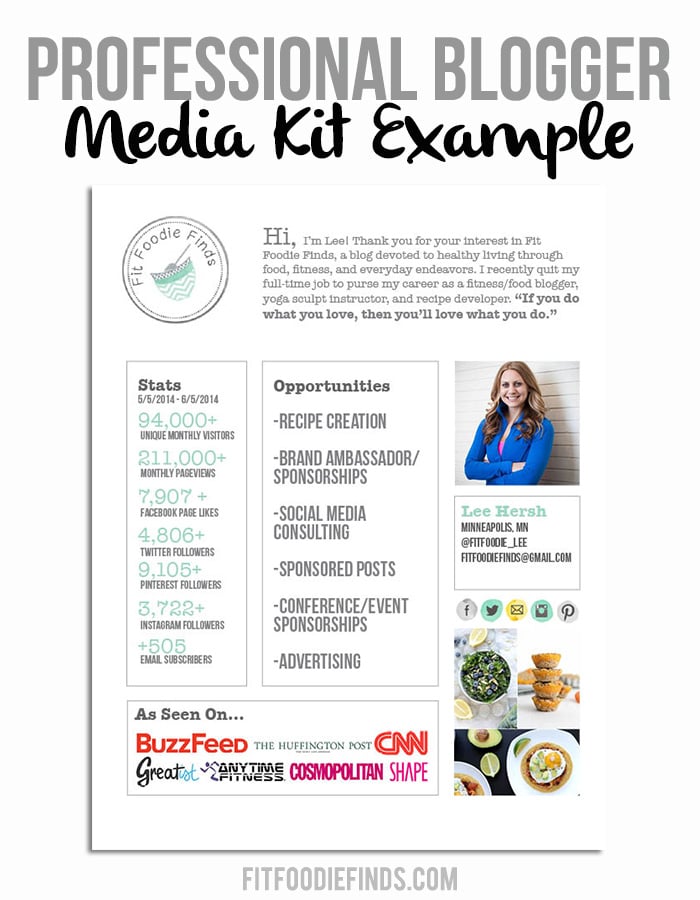
Image Source Brands are looking for unique and creative ways to market their offerings. If you have one-of-a-kind approach, don’t forget to highlight it in your kit. Provide a brief description of the strategy, your success rate upon implementation, and prices for the services you offer.
Other partnership options are giveaways, social media promotions, product reviews, sponsored posts.
- CTA or call to action

The CTA in your media kit’s primary goal is to get potential collaborators and advertisers to work with you. Or at least get them to contact you so you can further discuss how to best introduce their offerings through your blog.
- Your Contact Info
Simply put, it should be easy for interested brands and advertisers to reach you. Indicate multiple channels to contact you, including social media accounts. Don’t forget to include your blog URL, email address, and telephone number.
Layout, Design, and Format
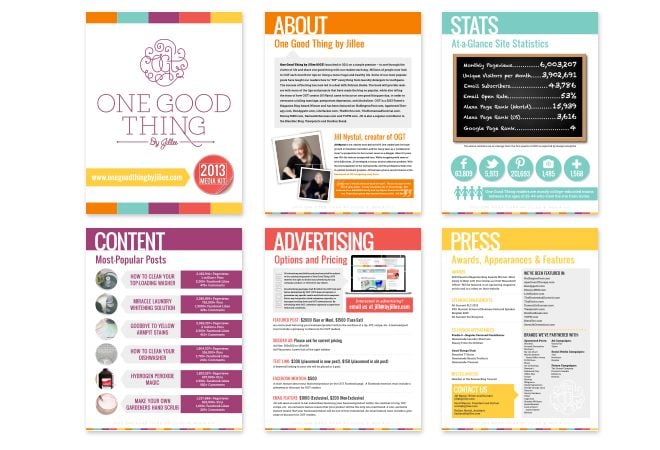
If you’re not good with website design or don’t have the money to hire a designer, you can use free design tools such as Snappa to create your media kit in a jiffy. It has hundreds of pre-made templates and free high-res stock photos. Plus the app can easily resize your graphic so you can repurpose it for your social media posts or use it as a YouTube video thumbnail.
You can also use Microsoft Word to create your media kit or PowerPoint which has numerous free templates.
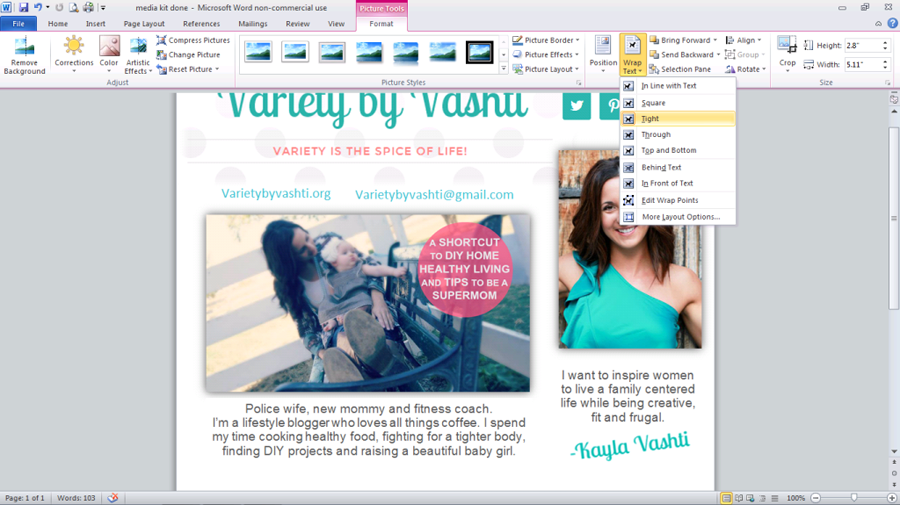
Image Source
Aside from stock photos, use visuals from previous and current brand partnerships in your media kit. You can also use photos from your most popular posts if you don’t have any collaboration yet.For colors and fonts, choose something that’s aligned with your blog or brand for easy recall.
If you’re comfortable enough to show your media kit online, create a landing page where readers and interested collaborators can easily download it. The final copy should be in PDF format and should be printer friendly. These media kit examples are a great resource for ideas and inspiration.
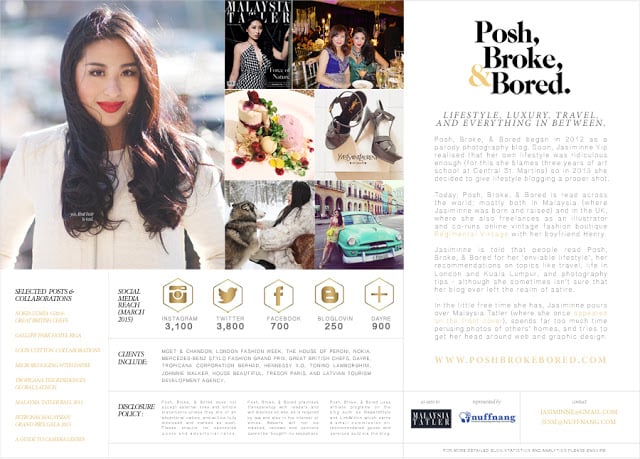
How to maximize your media kit
Here are some proactive approaches you can do:
- Attach your media kit when replying to brands interested in collaborating with you. While most of them do not request for one, it will be a professional gesture when they ask for more details about your blog offerings.
- Introduce your media kit to someone you’d like to work with. Since it’s usually a busy marketing manager you make a pitch to, keep your introduction email short and sweet.
- Encourage brands to drop you a line and request a media kit. You can actually make this a separate section on your “contact” page.
- Print out copies of your media kit and take them to conferences. Having said that, do not pass them around like a flyer. Hand them out to brands you really connect with or to marketing managers asking/ requesting about your blogging services.
Conclusion
As a blogger, you have to have significant reach before you can collaborate with brands. A media kit is just one way to maximize the earnings potential of your blog, and as your blog grows, you should also be ready to tackle multiple streams of income.And just like your blog, your media kit is a constant work in progress. Make sure to check it at least once a month to update your client roster and stats. Run your analytics on a consistent schedule too to make smart data-driven decisions.

Kickass Ways to Boost a Post [Free eBook]
P.S. Don't forget to check out our digital marketing WordPress themes.
Get more to your email
Subscribe to our newsletter and access exclusive content and offers available only to MonsterPost subscribers.


Leave a Reply
You must be logged in to post a comment.